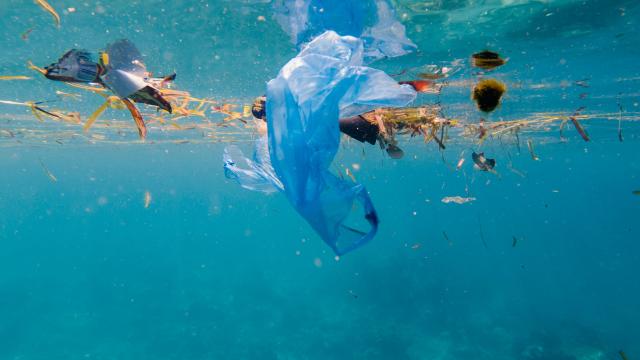Plastic in oceans has emerged as a major environmental threat in recent years, as the scale of the problem has become clearer.
We’ve already seen bans on single-use plastic come into effect in some countries, but that’s not the only initiative tackling this pollution.
Brought to you by HP. HP’s vision is to create technology that makes life better for everyone, everywhere. Sustainability is at the heart of its journey, fuelling innovation and growth for communities and businesses around the world. Learn more here.
The science and tech communities have also been collaborating with governments and big business on innovative solutions to stop the eight million tonnes of plastic that is dumped into oceans every year.
At current rates, it’s predicted that there will be ten times more plastic in our oceans by 2020, and more plastic than fish by 2050, meaning it’s never been more important to work towards a global fix.
Here are some of the most promising tech inventions and initiatives addressing plastic in our oceans:
Seabin
Seabin is an Australian invention from two surfers, who saw first-hand the impact of ocean pollution. It’s a floating rubbish bin (the clue’s in the name), designed for ports and marinas. The Seabin moves with the tide to collect garbage and oil from the water’s surface before the pollution can enter our oceans. Water is sucked into the the device, where debris as small as 2mm is caught in a filter, before pumping clean water back into the sea.
The $US5000 Seabin runs on just $2 of power per day and each Seabin captures an average of 3.9kg per day – or 1.4 tonnes per year. With 354 Seabins currently in the water, this means 1.3 tonnes of marine litter is being removed every day using this technology, a step in the right direction when you consider the impact that 1000 or even 10,000 units can have by ensuring a cleaner future for everyone.
The Seabin team have acknowledged that technology alone will not save our oceans and have set up a business model where 50 per cent of their activities are for profit and 50 per cent not for profit through the Australian registered Seabin Foundation. Activities include education, science and research programs, plus community events.
“Education is the real solution because if we cannot turn off the tap to plastics entering our oceans, how are we ever going to clean it up?” said CEO and co-founder Pete Ceglinski.
The Ocean Cleanup
Where Seabin focuses on enclosed ocean areas, The Ocean Cleanup’s technology aims to tackle a huge patch of accumulated plastic floating between Hawaii and California. The Great Pacific Garbage Patch is twice the size of Texas, with 1.8 trillion plastic pieces. The Ocean Cleanup is testing a 600-meter-long floating pipe, carried by wind, waves and currents with an aim to half the size of the garbage patch in five years. It essentially captures plastic in one place, allowing it to be easily collected every few months.
Edible Packaging
It’s estimated that around 40 per cent of plastic manufactured is single-use packaging, making it one of the leading causes of ocean pollution. A solution that treats the source rather than the symptoms is edible packaging. Startups like Skipping Rocks Lab and Evoware are leading the charge in packaging made from seaweed, including water bottles. Of course, you don’t actually have to eat the packaging, but the point is that it is plastic-free and biodegradable.
Smart Fishing Nets
Ocean pollution isn’t solely down to our reliance on single-use plastics, so banning straws, for example, isn’t a cure-all. The fishing industry is a major contributor, with equipment and nets killing trapped animals and adding to plastic piles. Innovations such as biodegradable fishing nets, smart nets that track their location through an app and high-tech trawl nets that make fishing more sustainable are all being tested and introduced around the world to cut down on discarded plastic within the industry.
New Plastics Economy
It’s important to mention that plastic remains an incredibly useful material, but steps can be taken to improve its production and subsequent disposal. Leading companies like HP and IKEA are increasingly committing to circular economy principles, which is another major step in solving the causes of plastic pollution, not just the symptoms. That includes closed-loop recycling, where a company uses the latest tech to collect waste from its products post-consumer and recycle it into new products.
In Australia, companies like Close the Loop are helping businesses achieve sustainability goals including zero waste to landfill, by recovering and re-using resources, ultimately reducing the amount of plastic at risk of entering oceans. Globally, over 200 businesses have signed up to the New Plastics Economy Global Commitment to reduce waste, while other programs like NextWave and The Plastic Bank aim to intercept plastic before it has a chance to reach the ocean, by empowering local communities to join the fight.
